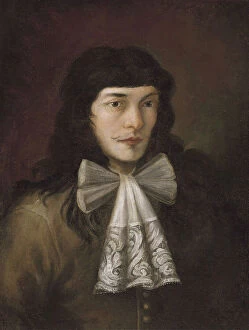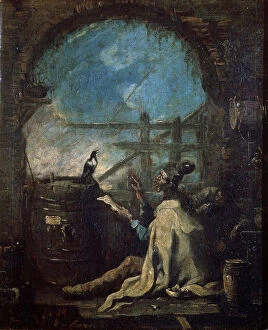Magnasco Collection
"Magnasco: A Master of Captivating Artistry" Step into the enigmatic world of Alessandro Magnasco
All Professionally Made to Order for Quick Shipping
"Magnasco: A Master of Captivating Artistry" Step into the enigmatic world of Alessandro Magnasco, an Italian artist whose works spanned from the late 17th to the early 18th century. Known for his unique and captivating style, Magnasco's paintings were often filled with mysterious narratives and intriguing subjects. One such masterpiece is "Saint Paul of Thebes tempted by a demon, after Magnasco" (ca. 1720-30), a haunting portrayal of spiritual struggle. Through his masterful brushstrokes, Magnasco brings to life the inner turmoil faced by Saint Paul as he resists the temptations presented by a menacing demon. In contrast, "Nuns at Work" showcases Magnasco's ability to capture everyday scenes with equal finesse. Created by an unknown artist inspired by Magnasco's style, this painting offers a glimpse into the lives of dedicated nuns engaged in their daily tasks within their convent walls. Magnasco's fascination with animals is evident in "The Tame Magpie" (ca. 1707-8). With meticulous attention to detail, he portrays a magpie perched on its handler's hand—a testament to his skill in capturing both beauty and character in nature. Moving beyond traditional subjects, it also delved into mythology and fantasy. In "The Visit of Venus to Vulcan, " he depicts the goddess Venus visiting her husband Vulcan amidst swirling clouds and ethereal light—an enchanting blend of mythological storytelling and artistic prowess. An alchemist engrossed in his experiments takes center stage in another work attributed to Magnasco simply titled "An Alchemist. " This piece invites viewers into a realm where science meets mystery as they witness the alchemist's quest for knowledge through intricate symbolism. "Garden Party in Albaro" transports us to an elegant gathering set against lush greenery—a testament to Magnaco’s versatility as an artist who could effortlessly capture both grand landscapes and intimate social scenes.


















